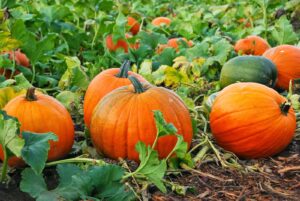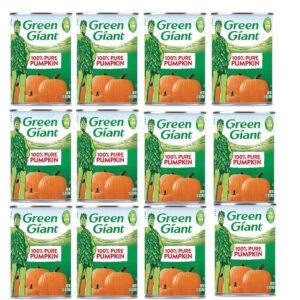Introduction: The Joy of Home-Grown Squash and Pumpkins

As a passionate home gardener, there’s nothing quite like the satisfaction of growing your own squash and pumpkins to enjoy with your family all year round. Not only are these versatile vegetables packed with nutrients, but the process of cultivating them can be incredibly rewarding. In this comprehensive guide, we’ll explore the ins and outs of growing squash and pumpkins in your home garden, from selecting the right varieties to harvesting and preserving your bountiful crop.
Choosing the Right Squash and Pumpkin Varieties
The first step in your home gardening journey is selecting the right squash and pumpkin varieties to grow. With so many options available, it’s important to consider factors such as your climate, available growing space, and personal preferences. Some popular choices include:
- Zucchini: A fast-growing and prolific summer squash that can be enjoyed in a variety of dishes, from grilled zucchini to zucchini bread.
- Butternut Squash: A winter squash with a sweet, nutty flavor that’s perfect for soups, roasted dishes, and pies.
- Acorn Squash: A small, round squash with a distinctive ridged exterior and a delicious, buttery flesh.
- Pumpkins: From the classic jack-o’-lantern varieties to smaller, sweeter pie pumpkins, these versatile gourds can be used for everything from festive decorations to hearty soups and baked goods.
When selecting your varieties, be sure to consider the growing requirements and maturity times to ensure a successful harvest. Consult with your local nursery or gardening resources to find the best options for your climate and available space.
Preparing Your Garden Bed
Once you’ve chosen your squash and pumpkin varieties, it’s time to prepare your garden bed for planting. Squash and pumpkins thrive in well-drained, nutrient-rich soil, so be sure to amend your soil with compost or other organic matter before planting.
To create the perfect growing conditions, follow these steps:
- Choose a sunny location: Squash and pumpkins require at least 6-8 hours of direct sunlight per day, so select a spot in your garden that receives ample sunlight.
- Improve soil drainage: Squash and pumpkins are susceptible to root rot, so ensure your garden bed has good drainage by adding sand, perlite, or other amendments to the soil.
- Enrich the soil: Incorporate a generous amount of compost or well-rotted manure into the soil to provide the necessary nutrients for your plants to thrive.
- Create mounds or hills: Plant your squash and pumpkin seeds or seedlings in raised mounds or hills, which will help improve drainage and allow the vines to spread out more easily.
By taking the time to properly prepare your garden bed, you’ll be setting your squash and pumpkin plants up for success and ensuring a bountiful harvest.
Planting and Caring for Your Squash and Pumpkins
With your garden bed ready, it’s time to get your squash and pumpkin plants in the ground. Whether you’re starting from seed or transplanting seedlings, follow these best practices for optimal growth:
- Timing: Plant your squash and pumpkin seeds or seedlings after the last frost has passed, typically in late spring or early summer, depending on your climate.
- Spacing: Space your plants 3-6 feet apart, depending on the variety, to allow for the vines to spread out and receive adequate air circulation.
- Watering: Squash and pumpkins require consistent moisture, especially during the flowering and fruit-bearing stages. Water your plants deeply, about 1-2 inches per week, and adjust as needed based on weather conditions.
- Mulching: Apply a 2-4 inch layer of organic mulch, such as straw or shredded leaves, around the base of your plants to help retain moisture and suppress weeds.
- Fertilizing: Feed your plants with a balanced, slow-release fertilizer or compost tea every 4-6 weeks to ensure they have the necessary nutrients for healthy growth and abundant yields.
- Pest and disease management: Keep an eye out for common pests and diseases, such as squash bugs, powdery mildew, and bacterial wilt, and address them promptly with organic or natural control methods.
By following these guidelines, you’ll be well on your way to a thriving squash and pumpkin garden that will provide your family with a bountiful harvest all year round.
Harvesting and Preserving Your Squash and Pumpkins
As your squash and pumpkin plants mature, it’s important to know when and how to harvest them to ensure the best quality and flavor. Here are some tips for a successful harvest:
- Timing: Summer squash, such as zucchini, are typically ready to harvest when they’re 6-8 inches long and the skin is still tender. Winter squash and pumpkins are ready when the skin is hard and the stem begins to dry out, usually 2-3 months after flowering.
- Harvesting: Use a sharp knife or pruners to cut the squash or pumpkin from the vine, leaving a few inches of stem attached. Be gentle to avoid damaging the fruit or the plant.
- Curing: For winter squash and pumpkins, allow the harvested fruits to “cure” in a warm, dry place for 10-14 days. This helps to thicken the skin and improve their storage life.
- Storage: Store your squash and pumpkins in a cool, dry place, such as a basement or root cellar, where they can last for several months. Avoid storing them in the refrigerator, as the cold temperatures can cause them to deteriorate more quickly.
- Preservation: If you have an abundance of squash or pumpkins, consider preserving them through canning, freezing, or dehydrating to enjoy their flavors all year round. This can be a great way to extend the life of your harvest and reduce food waste.
By following these best practices for harvesting and preserving your squash and pumpkins, you’ll be able to savor the fruits of your labor long after the growing season has ended.
Recipes and Culinary Inspiration
One of the best things about growing your own squash and pumpkins is the endless culinary possibilities. From savory dishes to sweet treats, these versatile vegetables can be used in a wide variety of recipes. Here are some ideas to get you started:
- Roasted Butternut Squash Soup: Blend roasted butternut squash with vegetable broth, spices, and a touch of cream for a comforting and nourishing soup.
- Zucchini Fritters: Grate zucchini, mix with eggs, flour, and seasonings, then pan-fry for a delicious and crispy side dish.
- Pumpkin Pie: Use your homegrown pumpkins to make a classic pumpkin pie, perfect for the holiday season or any time of year.
- Stuffed Acorn Squash: Bake halved acorn squash and fill with a savory mixture of rice, vegetables, and herbs for a satisfying main course.
- Grilled Squash Skewers: Cut summer squash and zucchini into chunks, thread onto skewers, and grill for a simple and flavorful side dish.
Don’t be afraid to get creative and experiment with your homegrown squash and pumpkins. Whether you’re whipping up a batch of pumpkin bread or roasting a medley of seasonal veggies, the possibilities are endless.



